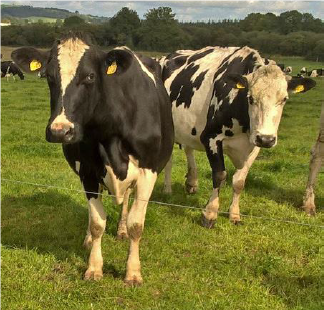The Benefit of AECS for Dairy Farmers
19 December 2023With the announcement of the return of the Agri-Environment Climate Scheme , in what is, at the time of writing, the last confirmed funding round, many within the industry are questioning whether or not they should consider an application. The answer is yes, but with a couple of caveats.

What is AECS?
Launched back in 2015, the Agri-Environment Climate Scheme is Scotland’s answer to the dual crisis of climate change and biodiversity decline, a multifaceted scheme that revolves around management options and supporting capital items to promote the principles of high nature value farming. The scheme has three available funding streams, including support for field and steading level environmental options, organic conversion and maintenance and importantly for the dairy sector, slurry storage for protection of the water environment and better use of nutrients.
Your Options
For those prospective applicants, the options available to a business differ depending on location and size. This is to reflect different local, regional and national priorities. For farmers in the northeast, this might include options to target corn bunting, whereas farmers and crofters on the Western Isles will have options to benefit species like the great yellow bumblebee or chough. The bulk of dairy farms in Scotland find themselves somewhere across the central belt or southwest, areas typically associated with permanent pasture and wading birds. Each business is able to search the options for which they are eligible on the Rural Payments website using their main location code.
AECS for Dairy Farms
Of all the sectors who can apply for funding the dairy sector has always had unique challenges that have limited uptake. Chiefly among these challenges is the fact that most dairy farms are reliant on highly productive, improved pasture and tight grazing patterns that are not necessarily conducive to management of semi-natural habitats. In addition, most payment rates have not been updated since 2017/18, leaving many to question the cost-benefit participation.
For those who can spare a field or two, even if just for a break period, options like wader grazed grassland can be a great addition to any contract, with a relatively high allocation of points if paired with the correct capital items. And for those farms with some semi-natural habitat (wetland, scrubland, species-rich grassland) implementation of an appropriate grazing plan could fetch you between £74 - £109 per hectare per annum, albeit with limitations on the kinds of improvements you can make during the scheme. Arable options are also available, with retention of winter stubble for £96 per hectare per annum being particularly popular as well as a collection of other high value options.
But in most cases, most options involving field scale activities require some kind of compromise to current management. Where the scheme really shines for the dairy sector is in its options to enhance and protect the water environment. A very topical issue right now, the water environment is well represented within the scheme. There are options to minimise poaching, like hard standings for troughs and gateways, or support for alternative watering, management of floodplains or options for managing steading drainage, the latter offering up to £10,000 in support for concrete to control and separate clean and dirty water.
In the right locations, the scheme can also fund new slurry storage where a business is below the recommended 6 months capacity, offering up to £30,000 and additional capital support. Applications of this nature are very different to the field and steading options mentioned previously and among other things, requires submission of a farm slurry and nutrient management plan, setting out current storage and justifying the need for support.

Apply Early
The next round of the Agri-Environment Climate Scheme will launch officially on Thursday 1st February 2024, but it is highly recommended that those businesses that are interested in applying seek out advice and support as early as possible, especially if your application is likely to impact a protected nature site or any of its features. While businesses are encouraged to begin preparations, please note that the scheme guidance is subject to change up until launch.
The application windows are as follows:
- Slurry stores: Will open in early 2024, details will follow shortly.
- Stand-alone organic conversion and maintenance: 01 February 2024 - 31 July 2024.
- Agri-environment: 01 February 2024 - 10 June 2024.
Alexander Pirie, SAC Consulting
alexander.pirie@sac.co.uk; 01292 525036
Sign up to the FAS newsletter
Receive updates on news, events and publications from Scotland’s Farm Advisory Service

